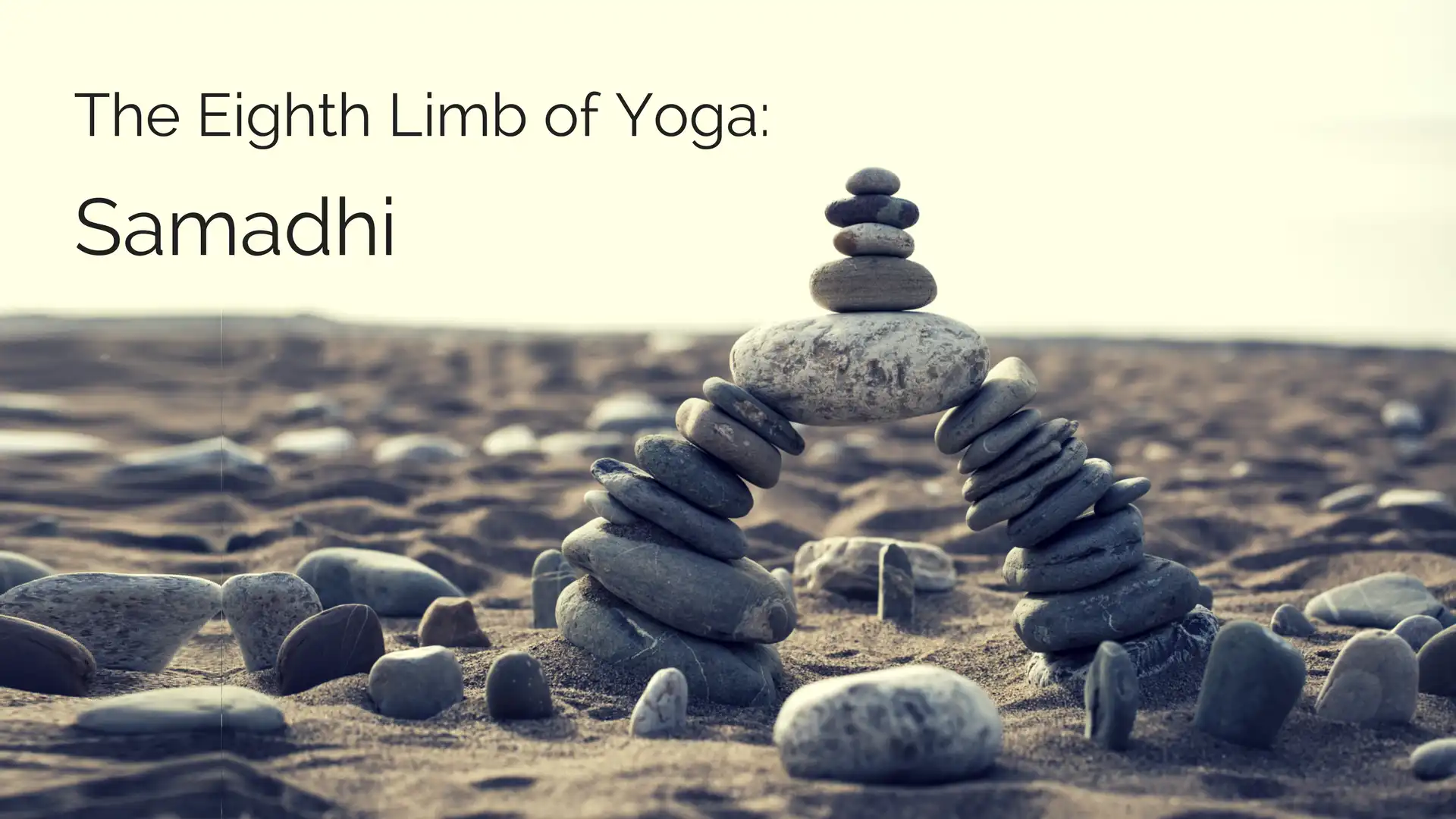The Eighth Limb of Yoga: Samadhi

Samadhi is the final limb and the ultimate destination on Patanjali’s eight-limbed path of yoga. It is often translated as enlightenment, but what does that really mean?
What is Samadhi?
Enlightenment is an elusive concept, one that’s difficult to describe in words. Yogis over the centuries have been frustrated in their attempts to explain this state, claiming that it’s something that can only be understood through experience. In Ramakrishna As We Saw Him, the venerated yogic saint Ramakrishna says to his students, “I wish very much to tell you about [samadhi] but I cannot. Somebody shuts my mouth … only he who has had the experience can understand it.” (1)
One of the reasons samadhi is so difficult to describe is because of its very nature. It’s a state that is beyond names, forms, objects, thought, concepts, and words. “In samadhi, the boundaries of Time and Space which ordinarily separate one object from another collapse,” writes Stephen Cope in The Wisdom of Yoga. “There is union between subject and object. No seam is left showing.” (2)
 Patanjali’s 8 Limbs of Yoga
Patanjali’s 8 Limbs of Yoga
Achieving this union is the culmination of the work, discipline, and inner exploration required to take the previous seven steps along the path of yoga. As we explored in prior articles, Patanjali’s eight limbs are divided into three groups. The first group is called bahiranga sadhana, or the outer practices: yamas (universal ethical practices), niyamas (personal lifestyle observances), and asana (posture). The inner practices, or antaranga sadhana, constitute the second group: pranayama (breath control) and pratyahara (sensory withdrawal).
After the preparation of the outer and inner practices comes antaratma sadhana, or the innermost practices. In Light on Yoga, B.K.S. Iyengar describes these innermost practices of dharana (concentration), dhyana (meditation) and samadhi as the “quest of the soul”. (3)
These last three limbs are often studied together and represent progressively deeper states of meditative absorption. With practice, dharana evolves into dhyana, which then deepens further into samadhi, the state in which the yogi at last experiences complete unification with the object of meditation.
Common Misconceptions About Samadhi
Although samadhi is a state that exists beyond words, it’s still helpful to examine its etymology to understand what the ancient yogis who named it were trying to convey. The word blends a few Sanskrit roots: sam, “together;” a, “toward;” and dadhati “puts or places.” So essentially it translates as “a putting or joining together,” or wholeness, oneness, integration.
There are many common misconceptions about what if feels like to achieve this “oneness” of samadhi. Some yoga students imagine it’s like being in a trance, or reveling in eternal bliss and happiness, or transcending this material plane for a more heavenly realm.
Samadhi is none of these things, and is quite the opposite. It’s about being more alive, fully awake, and fully conscious in this world, not escaping it to reach another. It’s the state of being completely, intensely present, with none of the assumptions, prejudices, opinions, tastes, or biases that usually color our experience of the world around us.
In samadhi, all of these layers fall away so that we may have a bare and wholly real experience of the object upon which we focus our attention. We see that there is no distinction between us and it, you and me, the observer and the observed. We have a deep and profound understanding that all is one.
Would you like to read more about the yogic path? If so read another inspiring article – Lessons on the Yogic Path: Uncovering the Jewel Within by Christine Malossi and YogaUOnline.
 Christine Malossi, RYT 200 is based in New York City, where she offers a mindful, alignment-focused Vinyasa practice that cultivates balance, awareness and equanimity. In addition to teaching private clients and group classes at studios throughout Manhattan, she also teaches at the Spencer Cox Center for Health at Mount Sinai Hospital’s Institute for Advanced Medicine where she designs a practice specifically tailored to patients diagnosed with HIV and other chronic illnesses. Christine is honored to be teaching yoga and to have the opportunity to pass on to others the joy and freedom that she has found in her own practice. Find her at www.christinemalossi.com
Christine Malossi, RYT 200 is based in New York City, where she offers a mindful, alignment-focused Vinyasa practice that cultivates balance, awareness and equanimity. In addition to teaching private clients and group classes at studios throughout Manhattan, she also teaches at the Spencer Cox Center for Health at Mount Sinai Hospital’s Institute for Advanced Medicine where she designs a practice specifically tailored to patients diagnosed with HIV and other chronic illnesses. Christine is honored to be teaching yoga and to have the opportunity to pass on to others the joy and freedom that she has found in her own practice. Find her at www.christinemalossi.com
Sources
-
Shri Ramakrishna. Ramakrishna As We Saw Him (St. Louis: Vedanta Society, 1990), p. 123.
-
Cope, Stephen. The Wisdom of Yoga (New York: Bantam Dell, 2006), p. 240.
-
Iyengar, B.K.S. Light On Yoga. (New York: Schocken Books, 1966).



